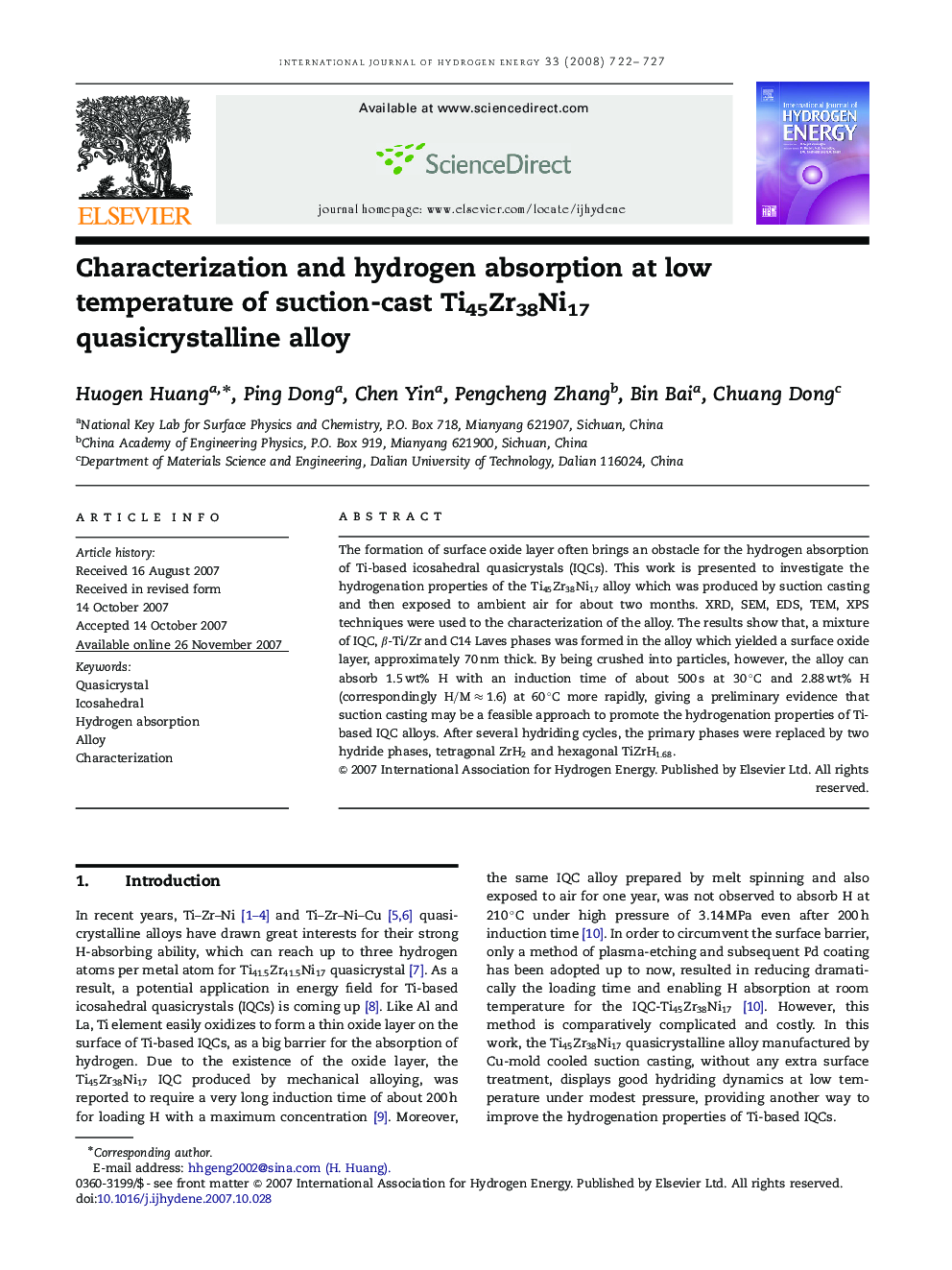| Article ID | Journal | Published Year | Pages | File Type |
|---|---|---|---|---|
| 1280001 | International Journal of Hydrogen Energy | 2008 | 6 Pages |
Abstract
The formation of surface oxide layer often brings an obstacle for the hydrogen absorption of Ti-based icosahedral quasicrystals (IQCs). This work is presented to investigate the hydrogenation properties of the Ti45Zr38Ni17 alloy which was produced by suction casting and then exposed to ambient air for about two months. XRD, SEM, EDS, TEM, XPS techniques were used to the characterization of the alloy. The results show that, a mixture of IQC, β-Ti/Zr and C14 Laves phases was formed in the alloy which yielded a surface oxide layer, approximately 70 nm thick. By being crushed into particles, however, the alloy can absorb 1.5 wt% H with an induction time of about 500 s at 30âC and 2.88 wt% H (correspondingly H/Mâ1.6) at 60âC more rapidly, giving a preliminary evidence that suction casting may be a feasible approach to promote the hydrogenation properties of Ti-based IQC alloys. After several hydriding cycles, the primary phases were replaced by two hydride phases, tetragonal ZrH2 and hexagonal TiZrH1.68.
Related Topics
Physical Sciences and Engineering
Chemistry
Electrochemistry
Authors
Huogen Huang, Ping Dong, Chen Yin, Pengcheng Zhang, Bin Bai, Chuang Dong,
